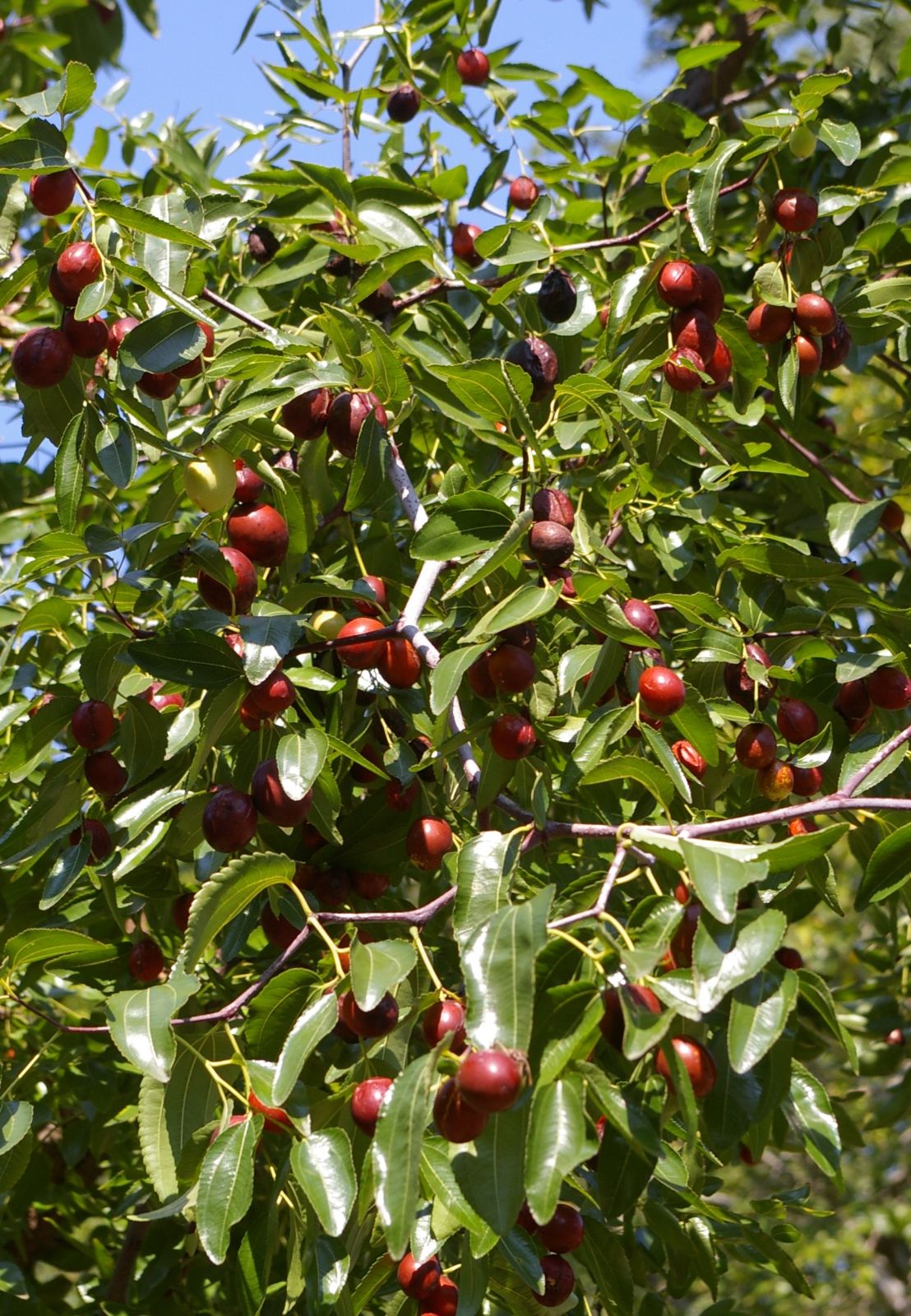Ziziphus
Credits
Article from Bean's Trees and Shrubs Hardy in the British Isles
Recommended citation
'Ziziphus' from the website Trees and Shrubs Online (treesandshrubsonline.
Family
- Rhamnaceae
Ziziphus has some forty species of deciduous or evergreen trees and shrubs, natives mainly of tropical and warm temperate regions. Leaves alternate, three- or five-nerved from the base, stipules present, usually converted into spines. Flowers small, perfect, in axillary cymes. Petals five. Stamens five, opposite the petals. Fruit an edible, fleshy drupe; stone with usually two seeds.
The generic name derives from the ancient Greek word for Z. jujuba. It is sometimes wrongly spelt “Zizyphus”.
From the Supplement (Vol.V)
The generic name was spelt as above by Miller, its author. It is of no relevance that Linnaeus named the type-species Rhamnus zizyphus, since names do not have priority outside their own rank. No doubt it explains, however, why the spelling ‘Zizyphus’ has been generally used by botanists for the generic name. See further below.

